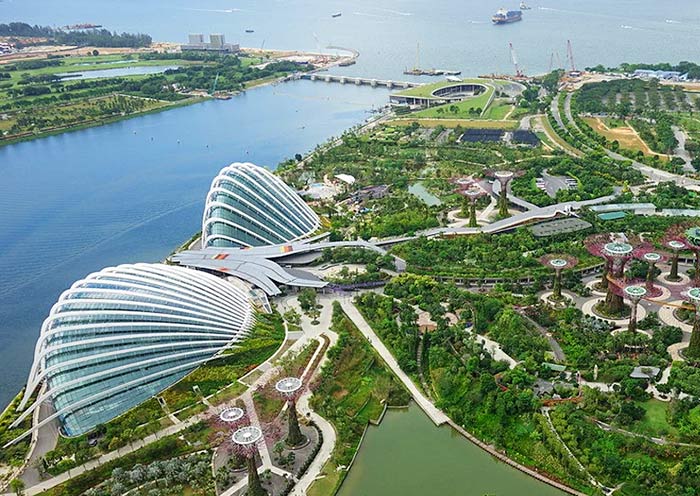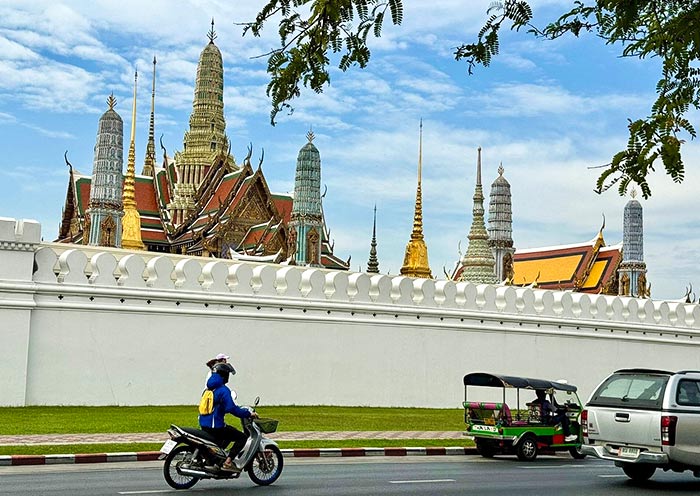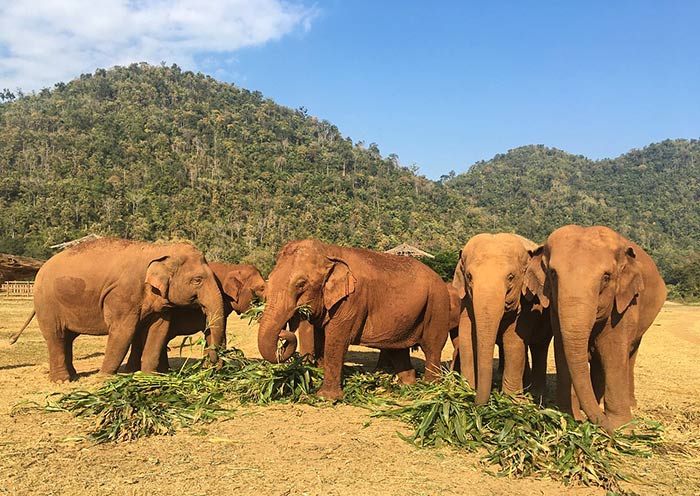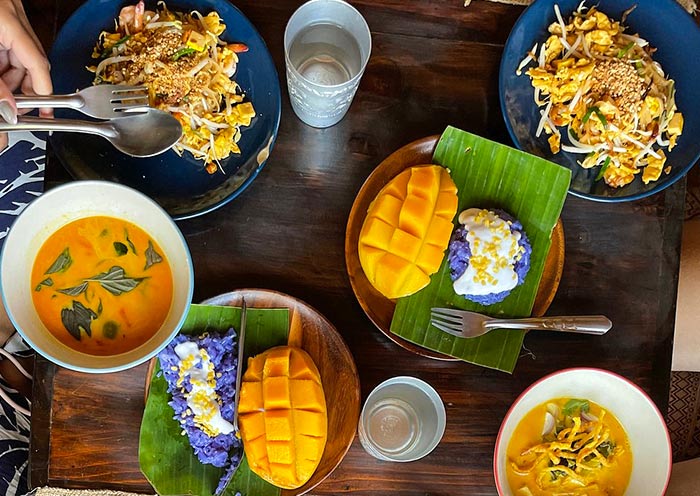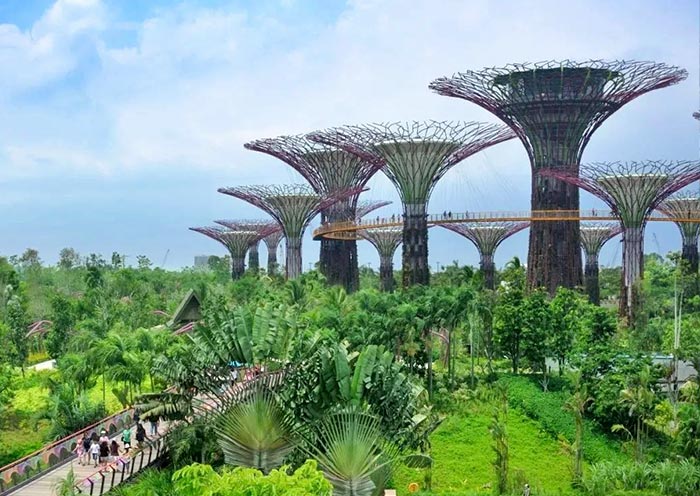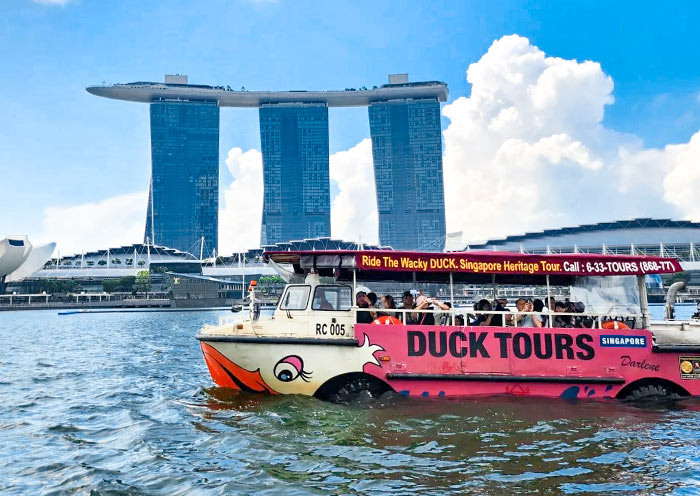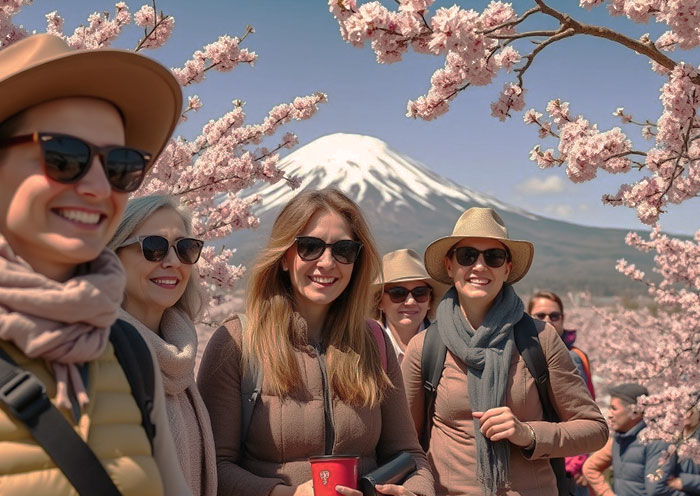We traveled with 7 lady friends. Our trip with Asia Odyssey Travel was so well planned, and seamless. Our time in Bhutan was exceptional, being led by Ugyan and Doji. What two very wonderful men. They were both so very knowledgeable, kind, and helpful. I cannot say enough good about our time in Bhutan with these two good men,...our guide and driver. Thank you Asia OdysseyTravel!!! p.s. Our trip was planned by Tony of Asia Odyssey. He was amazingly helpful, and planned our trip flawlessly! Thank you, Tony!
7 Days Thailand Singapore Tour Package - From Land of Smiles to Garden City
- Highlights
- Itinerary
- Price
- Trip Notes
- Accommodation
- Photos
- Reviews
Thailand Singapore Tour - One Week Adventure in The Heart of Southeast Asia
7 Days, Two Countries: Unlock Thailand’s Charm and Singapore’s Future! Our 7 Days Thailand Singapore Tour Package is the perfect getaway to the heart of Southeast Asia. From historic temples to modern skylines, elephant jungles to the Garden City, cultural gems to urban wonders, and Thai cuisine to hawker/Michelin street food, this Thailand Singapore Tour promises a rich tapestry of unforgettable experiences.
Bangkok’s Temples: Marvel at the Grand Palace, sacred Wat Phra Kaew (Emerald Buddha), and the majestic Wat Arun at sunset. Dive into bustling Chinatown for street food delights.
Chiang Mai’s Jungles: Bond with gentle giants at an ethical elephant sanctuary, master Thai flavors in a cooking class, and wander the ancient walls of the Old City.
Singapore’s Innovation: Explore the UNESCO-listed Botanic Gardens, snap photos at Merlion Park, and uncover multicultural gems in Kampong Glam. Cap it off with free time at Jewel Changi—a wonder of aviation and nature.
One Week, Three Cities, Infinite Memories: From the Land of Smiles to the Garden City, our 7 Days Thailand Singapore Tour is a sensory feast of captivating contrasts. Book now and let Southeast Asia’s heart beat to your rhythm!
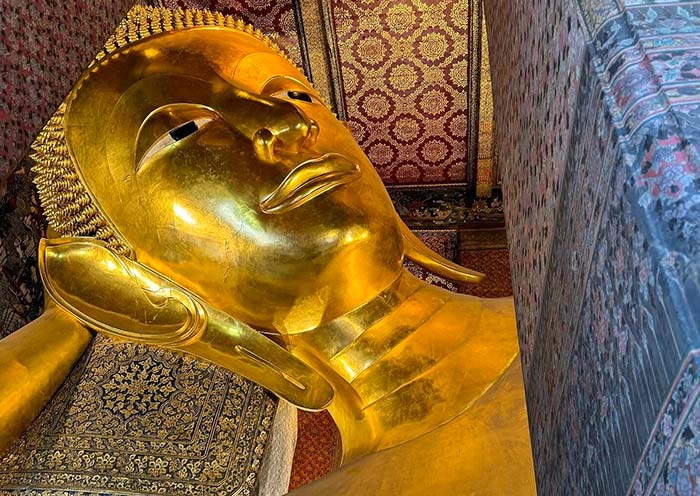

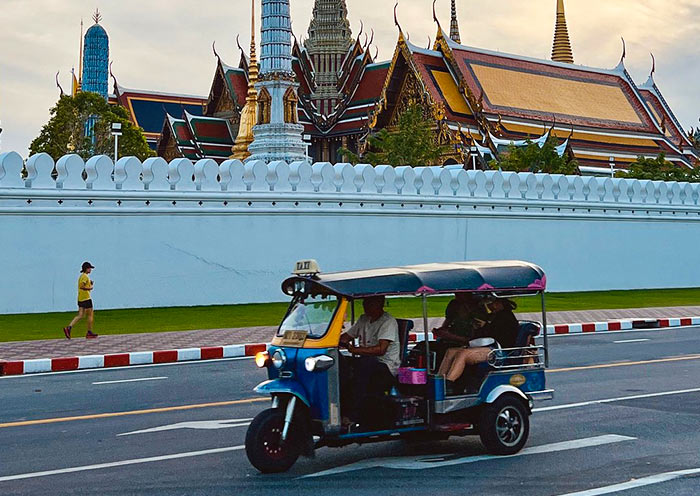
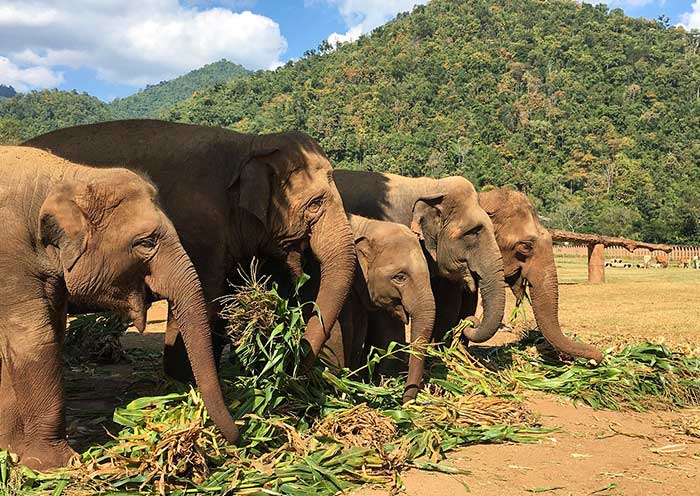
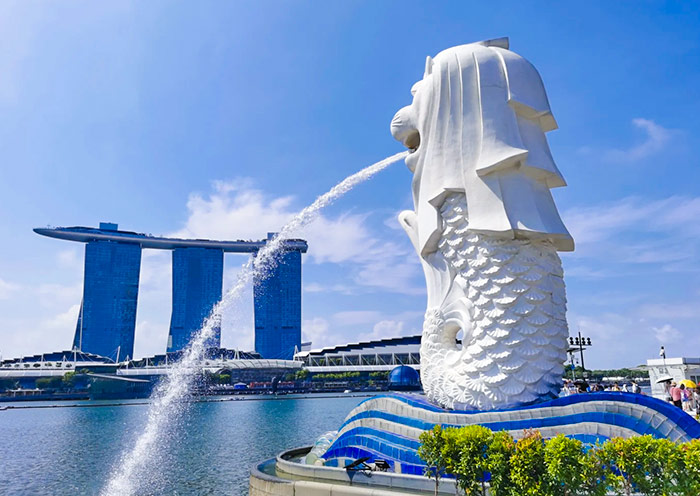


Itinerary at a Glance
Bangkok, Thailand (2.5 Days)
Wat Phra Kaew, Grand Palace, Wat Pho, Wat Traimit, Chinatown, Wat Arun
Chiang Mai, Thailand (2 Days)
Chiang Mai Old City (Optional), Elephant Jungle Sanctuary, Chiang Mai Cooking Class (Optional)
Singapore (2.5 Days)
Kampong Glam, Merlion Park, Thian Hock Keng Temple, Singapore Botanic Gardens (World Heritage; National Orchid Garden)
Itinerary Day by Day
Sawatdee Krap/Kha! Welcome to Bangkok, the capital city of Thailand! Upon your arrival at the airport in Bangkok, the tour guide and driver will meet you at the exit and then escort you to the hotel in downtown Bangkok. You can have a good rest in your hotel and get ready to explore Bangkok with your guide the next day.
Bangkok means the "City of Angels" in translation from its ceremonial Thai name, Krung Thep Maha Nakhon. It is a vibrant metropolis known for its bustling markets, ornate temples, and delicious Thailand street food. You can indulge in Bangkok's diverse culinary scene, from street eats to upscale dining. Shop till you drop in luxury malls or explore local markets. Enjoy the city's lively nightlife, rooftop bars, and live music venues. Bangkok offers a blend of tradition and modernity, making it an exciting and captivating destination.
Free Time Ideas:
1. You can watch a Thailand boxing game at Rajadamnern Stadium.
2. Unwind with a traditional Thai massage or spa treatment.
Arrival Ideas:
Bangkok, the capital city of Thailand, serves as a significant international hub with direct flights from various cities worldwide. Major cities offering direct flights to Bangkok include London, Dubai, Singapore, Kuala Lumpur, Ho Chi Minh City, Doha, Taipei, Hong Kong, Frankfurt, Paris, Helsinki, Beijing, New York, Los Angeles, Tokyo, and Sydney. Many cities in Thailand, such as Chiang Mai (Chiang Mai International Airport), Phuket (Phuket International Airport), Krabi (Krabi International Airport), and Koh Samui (Samui International Airport ), also have direct flights to Bangkok's main airports, Suvarnabhumi Airport (BKK) and Don Mueang International Airport (DMK). Flight availability and routes can vary based on airlines, seasons, and other factors. It is recommended to consult airlines or our travel consultant for the most up-to-date information regarding direct flights to Bangkok from your specific location.
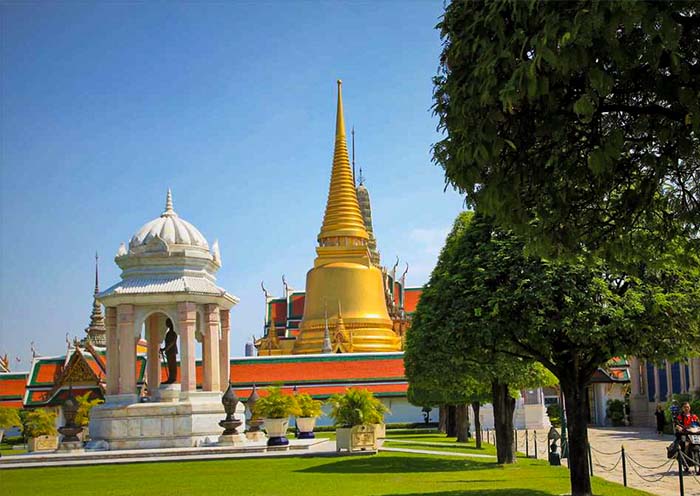
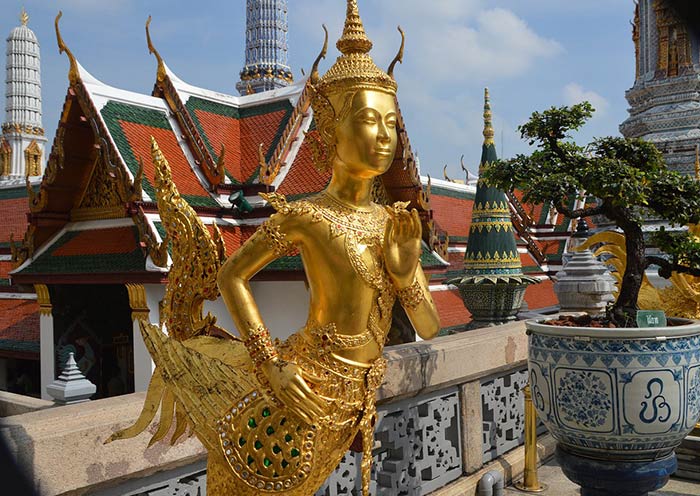
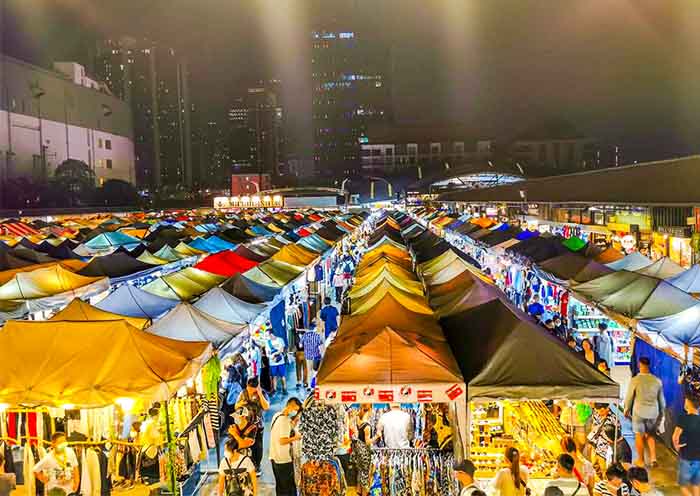
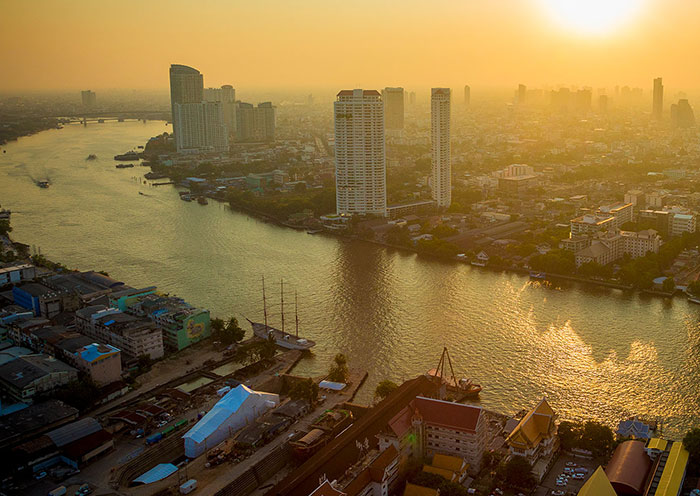
Today, you will explore the Top 5 must-visit places in Bangkok: Wat Phra Kaew, Grand Palace, Wat Pho, Wat Arun, and Chinatown. You see “Wat” means “Temple” in Thai language. You will also experience a Thai tuk-tuk, take a ferry or boat ride on the Chao Phraya River, and indulge in local food in Chinatown. This is a classic Bangkok trip, allowing you to witness 2 of the three treasures of Thailand: the jade Buddha and the reclining Buddha.
In the morning, head to Wat Phra Kaew which was built in 1782 and is located in the northeast corner of the Grand Palace in Bangkok. Covering one-fourth of the Grand Palace's area, Wat Phra Kaew is the most famous royal Buddhist temple in Thailand. This temple is renowned for enshrining one of three national treasures of Thailand, the Emerald Buddha, which is carved from a single block of Emerald. Each year, the Thailand King personally changes the Buddha's robes according to Thailand's three unique seasons. Each season changes with a certain robe: a gold robe embedded with rubies for the hot season, a gold robe embedded with sapphires for the rainy season, and a pure gold robe for the cool season. Don’t forget to check which robe the Emerald Buddha wears when you are there.
On the walls surrounding the cloisters of Wat Phra Kaew, there are a total of 178 murals (1,000m in length). Painted during the reign of King Rama I, the first monarch of the Chakri Dynasty in 18th-century Thailand (Bangkok Dynasty), the murals depict scenes from the Indian mythological epic "Ramayana," which narrates the story of King Rama joining forces with the monkey deity Hanuman to defeat the demon king Ravana and rescue the exquisite princess Sita. It is said that the story of the "Journey to the West" is also based on this legend. All the murals were created by royal court painters and the golden pigments used were made entirely from gold, resulting in exquisite and unparalleled artwork.
With the guidance of your tour guide, you can learn about the mythical creatures within Thai Buddhist architecture. For example, there is the Garuda, a mythical bird and guardian deity of Buddhism, perched on the rooftops. At the entrance of the temple, you'll find Yaksa, a protective deity, and outside the halls, there are statues of Kinaree, a mythical half-bird, half-human creature. The base of the pagoda is adorned with statues of Hanuman, the monkey deity.
After visiting Wat Phra Kaew, you can go on a visit around the Grand Palace. The Grand Palace, which was first established in 1782, was constructed as a replica of the old palace in the former capital city of Ayutthaya. It serves as a symbol of the Bangkok Dynasty and is the most well-preserved, largest, and most distinctive palace in Thailand. The Grand Palace is currently used for coronation ceremonies, royal celebrations, and hosting foreign dignitaries. From King Rama I to King Rama VIII, all the monarchs of the Bangkok Dynasty resided in the Grand Palace. However, after an assassination incident in 1946 involving King Rama VIII, King Rama IX moved to a new residence. The Bangkok Dynasty has continued to the present day, with the current monarch being King Rama X.
The Grand Palace complex consists of 22 buildings and is elegantly situated along the banks of the Chao Phraya River. The main structures are four distinct palaces (Borombhiman Hall, Amarindra Hall, Chakri Mahaprasat, Dusit Hall), showcasing the essence of Thai architecture, painting, sculpture, and interior decoration. It is often referred to as the "Encyclopedia of Thai Art". By the way, the Thai King is considered the incarnation of the god Vishnu, and Garuda is Vishnu's guardian. As a result, sculptures of the Garuda (stepping on 2 serpents) can be found on door lintels, eaves, and walls, with a total count exceeding several hundred. Witnessing the changing of the guards' ceremony is a bonus when visiting the Grand Palace.
Then, visit Wat Pho (Temple of the Reclining Buddha) which is a 10-minute walk from the Grand Palace. As the oldest and largest temple in Bangkok, Wat Pho houses the largest reclining Buddha and the highest number of Buddha images and stupas in the city. The reclining Buddha, one of three national treasures of Thailand, is 46 meters tall and 108 meters long, depicting the scene of the Nirvana of Gautama Buddha. Within the temple grounds, there is a Bodhi tree, believed to be the spot where the Buddha meditated. The temple is adorned with about 100 stupas, with the most magnificent being the four stupas which are decorated with blue, white, yellow, and green ceramic tiles. In the courtyard, you can also see many Chinese-style stone sculptures, such as door guardians and lions, which were traditionally used on ships for ballast and protection against evil spirits.
Wat Pho is regarded as Thailand's first university and is considered the birthplace of Thai medicine and traditional Thai massage. It still houses a private school established in 1957 that teaches traditional Thai medicine and offers authentic Thai massages (optional, self-pay).
In the afternoon, take a ferry or boat (cruise; optional) on the Chao Phraya River to view Wat Arun (outside view). The Chao Phraya River divides Bangkok into two parts, and many famous temples are concentrated along its banks. The Wat Arun, is one of the most prominent temples that stands on the river's edge, complementing the Grand Palace on the opposite side. (Note: Due to the hot weather and the presence of numerous steps at Wat Arun, many of our guests opt to take a boat trip and enjoy the view of Wat Arun from the outside, either from the boat itself or from the opposite side.)
Built in 1809, Wat Arun was established to honor King Taksin (郑信), the 41st monarch of Thailand (1767-1782) and a national hero. During the invasion of the Burmese army, King Taksin led the Thai people in a brave resistance, successfully driving out the Burmese and establishing the Thonburi Kingdom. To commemorate this Chinese-Thai king (from Guangdong), the temple was named Wat Arun, meaning "Temple of Dawn", as the battle took place at dawn. The main stupa of the temple stands at a height of 79 meters and is often referred to as the Thai version of the Eiffel Tower. In contrast to many other magnificent temples adorned with gold, Wat Arun stands out with its elegant white structure, attracting numerous visitors who come to rent traditional Thai costumes for photography. Situated by the Chao Phraya River, Wat Arun (Temple of Dawn) also offers a captivating view of the sunset, which is another reason why people flock to this location.
In the evening, take a Thai tuk-tuk to Chinatown Bangkok for dinner. Chinatown Bangkok (Yaowarat) is renowned as one of Bangkok's liveliest and most bustling commercial areas, with reportedly 70% of the city's gold shops located in Chinatown. The entire street of Chinatown stretches for about 2 km, lined with numerous shops, and thousands of businesses proudly displaying eye-catching Chinese signs. You may have watched the film Detective Chinatown, which was filmed in Chinatown Bangkok which has a history of over 200 years. You can search for the hidden shops that appeared in the film while enjoying the food in Chinatown, a haven for foodies. The restaurants and food stalls here provide a rich selection of Chinese, Thai, and other Asian delicacies. From classic pad thai to exotic grilled meats, there's something for everyone.
Warm Tips:
1.When entering the Grand Palace or temples, it is prohibited to wear shorts or skirts that do not cover the knees. Shoulders and midriffs should be covered, and clothing should not be excessively tight or have holes.
2.Upon entering a temple, remove your hat and shoes. Photography is prohibited inside the temple halls. The use of drones is strictly prohibited within the royal grounds.
3.Do not enter unauthorized areas or areas marked with warning signs. Unauthorized photography or videography is prohibited in restricted areas.
4.The lights of Wat Arun usually turn on around 7 PM. For sunset, it is recommended to arrive Wat Arun around 5:30 PM, do double check with your guide for the sunset time based on your travel schedule.It is said that the best spot to capture the beauty of Wat Arun is in the alley across from Wat Pho, where a restaurant is located.
5.Opening Hours for Temples (Wat):
Wat Phra Kaew : 8:30 AM - 3:30 PM
Wat Pho: 8:00 AM - 6:30 PM
Wat Arun : 8:00 AM - 6:00 PM

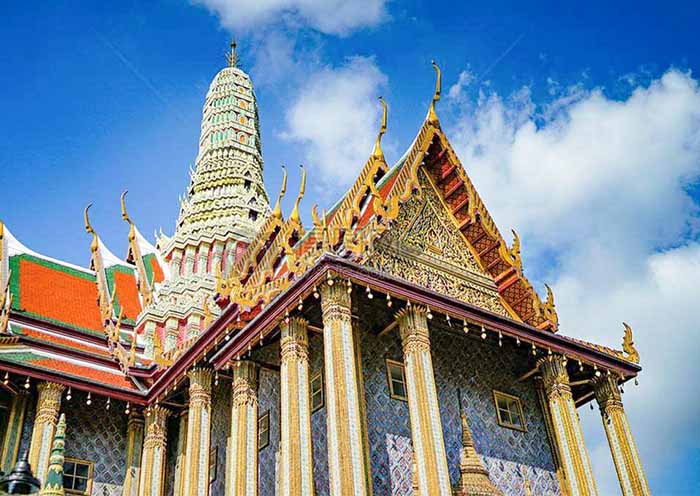

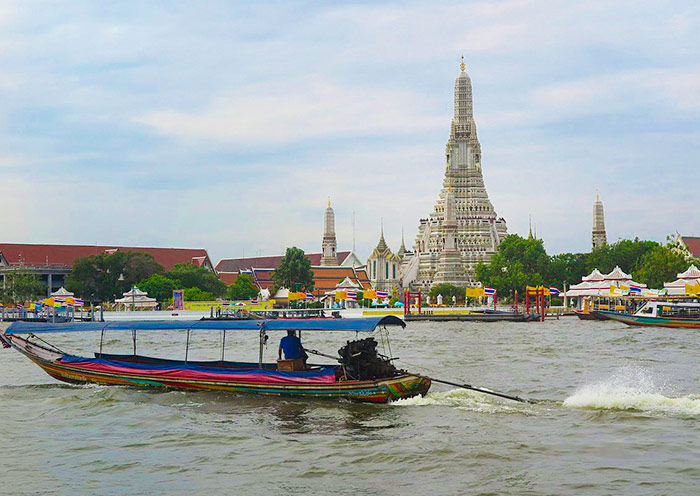
This morning,you will have some free time in Bangkok and explore more on your own till your guide or driver escorts you to the airport for your flight to Chiang Mai.
If you like you can take a morning tuk-tuk ride to visit Pak Khlong Talat Flower Market (optional), also known as Bangkok Flower Market, which is one of the top 9 flower markets in the world. This Flower Market is a must-visit destination for a sensory feast. This vibrant market immerses you in a kaleidoscope of colors and fragrances, offering an unforgettable experience. Beyond flowers, the market offers glimpses of local life, with lively activity and bustling vendors. Open 24/7, it accommodates all schedules, allowing early risers and night owls to indulge in its charm. Capture unique photos amidst the vibrant displays, and explore stalls selling fruits, vegetables, and floral supplies.
Then, head to airport for your flight to Chiang Mai (1h15m). The Chiang Mai Airport is only 3km away from the Chiang Mai Ancient City. Check-in at your hotel in Chiang Mai and have a good rest.
Chiang Mai is the second largest city in Thailand and was the capital of the independent Lanna Kingdom until 1558, the first kingdom in Thai history. It is renowned for its rich history, numerous temples, and unique culture. Chiang Mai is also known as the "Rose of the North" and offers a slower pace of life. People from all over the world flood here to get close to elephants through various Elephant Sanctuaries, experience local life through Thai Cooking Classes, and enjoy a vibrant atmosphere through its Walking Street Market and Night Bazaars around Chiang Mai Old City.
If time permit, you can spaned Half day Citywalk in Chiang Mai Old City (Optional) to explore Chiang Mai’s stunning Temples (Wat Phra Singh, Wat Chedi Luang, Wat Phan Tao), vibrant culture, and a laid-back atmosphere. It's a place for Architecture and culture lover. After your Chiang Mai trip, you may understand why Chiang Mai was Teresa Teng's (邓丽君) favorite city.
For the Half day Chiang Mai Old City tour (Optional), you will enter Chiang Mai Old City by the Tha Phae Gate, which is the landmark of Chiang Mai. The Old City is a square measuring 1.5 kilometers in length and 1.5 kilometers in width, surrounded by a moat. It is the most complete and well-preserved city gate, constructed in the early 13th century, remaining from the ancient walls that once surrounded the Old City. It served as a defensive structure against invaders and a gateway to the Lanna Kingdom. The area around the gate is always bustling with activity, especially during festivals like Loy Krathong and Yee Peng Lantern Festival (Sky Lantern Festival; Nov. or Dec.).
There are around 30 temples within the Chiang Mai Old City walls today. You will visit Wat Phra Singh, one of the three major temples in Chiang Mai, is the largest and most revered temple in the ancient city. It was originally built in 1345 when the fifth king of the Mangrai dynasty constructed a stupa to enshrine his father's ashes. Over time, it was expanded to its present scale. The temple, named after a famous Buddha image called Phra Singh (Lion Buddha), showcases stunning Lanna architecture, a unique blend of Thai, Burmese, and Mon styles. In the center of the temple stands a large golden pagoda, approximately 20 meters high, built in the 16th century, which is said to house the relics of Gautama Buddha. Wat Phra Singh is also one of the main locations for locals to celebrate the Songkran Festival (held annually from April 13th to 15th, Thai New Year).
Then, visit Wat Chedi Luang (Temple of the Big Stupa) which was located at the center of Chiang Mai Old City. The temple has a history of over 600 years and holds the same esteemed status as Wat Phra Singh, making it one of the three major temples in Chiang Mai. The centerpiece of the temple is the Lanna-style square-shaped great stupa, originally standing at a height of 98 meters, which was once the tallest structure in northern Thailand. It was built by King Saen Muang Ma of the Lanna Kingdom in 1411 AD. Throughout history, it has endured wars, and earthquakes, leaving only the 42-meter-high base and the ground level, bearing witness to the storied and profound history of Chiang Mai. Currently, new Buddha images have been placed on the four sides of the great stupa. On the southern wall, there are six elephant sculptures, with five of them being replicas restored with cement, and only the rightmost one being the original piece that has been preserved. It is worth seeing.
Later, hop to Wat Pun Tao which is 100 meters away from Wat Chedi Luang. Wat Phan Tao, also known as the Teakwood Temple, is entirely constructed from teakwood provided by the royal family. With a pure Lanna-style design, built in the late 1870s, making it a treasured sanctuary within the city of Chiang Mai. It is also one of the few remaining wooden structures in the area. Every year during the Yi Peng Lantern Festival (mid Nov., Thai Lantern Making & Releasing), Wat Phan Tao holds a lighting ceremony, attracting photographers from both domestic and international locations.
If time permit, you can visit Wat Chiang Man, the oldest temple in Chiang Mai. It is the first Buddhist temple in the ancient city and was personally supervised and built by King Mengrai, the first king of the Lanna Kingdom, in 1297.
Free Time Ideas for Chiang Mai Night Markets:
1.Chiang Mai Night Bazaar (Chang Klan Road; Everyday: 5pm-12pm)
2.Tha Pae Sunday Walking Street on Ratchadamnoen Road (1km, Sunday only, 5pm-10pm)
3.Wua Lai Walking Street on Wua Lai Road (Saturday only, 5pm-11pm)
4.Do double-check with your local guide for the market opening time.
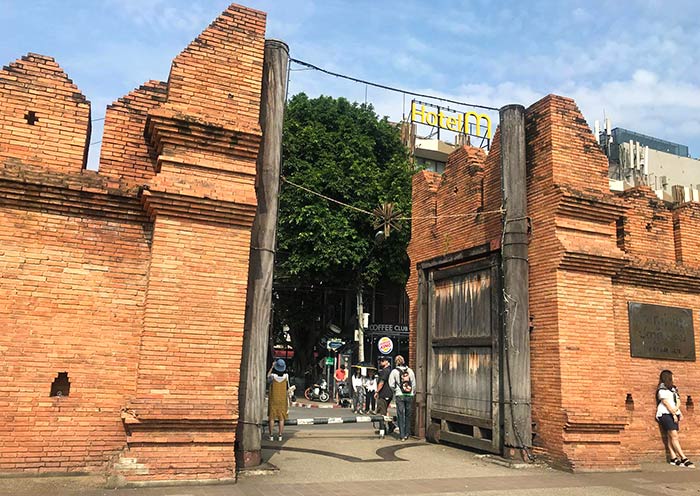
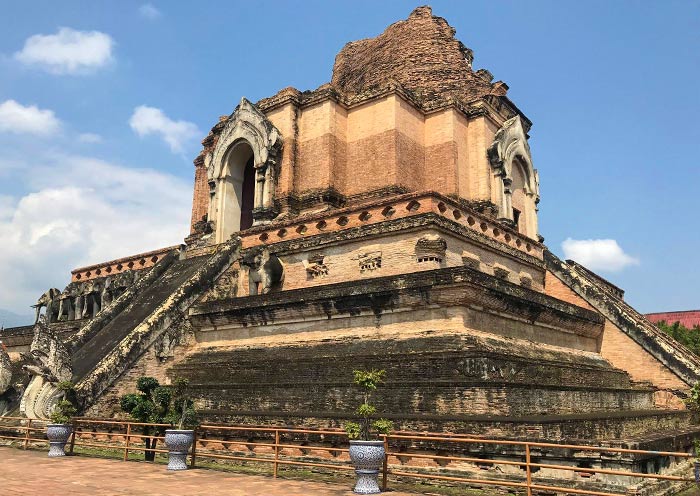

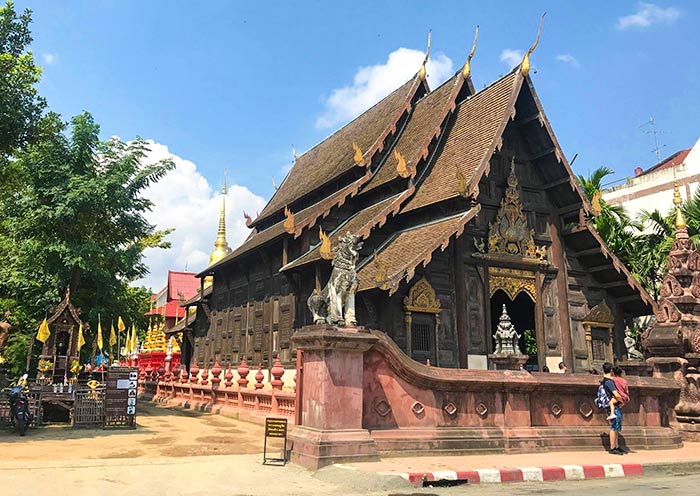
Chiang Mai is a popular destination to see elephants up close in a wide open space. Today, you will enjoy a half-day morning visit to Elephant Jungle Sanctuary. Afterward, you can freely relax for the rest of the day, perhaps by taking a Chiang Mai Cooking Class (15:30-19:00; optional) or trying out Lila Thai Massage near the Tha Pae Gate (optional). This offers a delightful opportunity to experience the real local life in Chiang Mai.
Upon arrival at the Elephant Jungle Sanctuary, savor a welcome snack while sipping tea or coffee and learning about elephants during an informative introduction. Get involved in the preparation of natural dietary supplements for the elephants before meeting these gentle giants. Feed them, administer supplements, and hear their inspiring stories while capturing memorable photos in their natural environment. Experience a unique mud spa session with the elephants, followed by a refreshing swim and shower in the specially constructed outdoor "Elephant Shower". You may even have the chance to engage in a fascinating "DIY Poop Paper" recycled paper activity.
After learning about the elephants, observe the elephants, feed the elephants, shower the elephants, enjoy a delicious lunch of traditional Thai cuisine and seasonal fruit, head back to your hotel, and enjoy your relaxing day freely. Overnight in Chiang Mai.
Warm Tips:
1.Book in advance: Elephant sanctuaries are popular attractions, so it's important to book your visit in advance, especially during peak season.
2.Wear appropriate clothing: You'll likely be doing some walking and getting muddy, so wear comfortable shoes and clothes that you don't mind getting dirty.
3.Respect the elephants: Always follow the instructions of your guide and be gentle and respectful when interacting with the elephants.
Free Time Idea around Chiang Mai Old City:
1.Half-day Thai Cooking Class in Chiang Mai: There are many Chiang Mai Cooking Schools that offer various Cooking Classes (appetizer, stir-fry, dish, soup, curry, dessert), from farm to table or from market to table, enjoy the famous Thai Dishes cooked by yourself (Thai tea, Tom Yam Soup, Pad Thai and more).
2.Try Chiang Mai Women's Correctional Institution Lila Thai Massage (Optional, self-pay). It is located near the Tha Pae Gate.
3.Foodie Experiences in Chiang Mai: Explore local markets around the Chiang Mai Ancient City such as Warorot Market (Everyday: 4am-6pm), Jing Jai Market (Everyday: 8:30am-9pm), Coconut Market (Saturday/Sunday/Monday, 8am-2pm), White Marke (Nimmanhaemin Road; 3pm-10pm; Closed on Weds & Thur.). Do double-check with your local guide for the market opening time.
Warm Tips:
1.There are many Elephant Sanctuaries in Chiang Mai, if you prefer Elephant Nature Park (Hands-off), do ask us to check if it is available, especially during the high season.
2.If you are interested in local markets or Night Bazaars, be sure to note that some markets are only open on Saturday or Sunday. Ask your guide for advice.

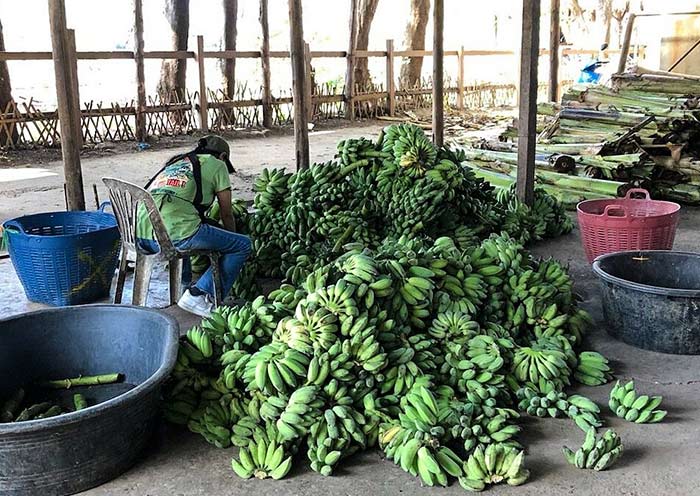
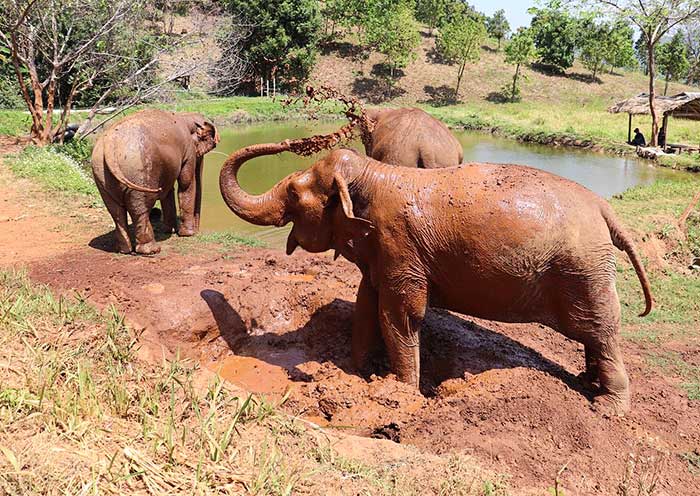

Upon arrival, your driver (Driver Only) will meet you and escort you to your hotel. After checking in to the hotel, the rest of the day is free for you to relax or explore on your own. (Note: Hotel Check in time 3 pm. Contact Asia Odyssey Travel if you need a Driver and a Tour Guide Service).
Welcome to Singapore City, the Second Smallest Country in Asia (only bigger than Maldive) ! Singapore is a unique city-state Island Nation, where the city is the country and the capital itself. Despite its land area of about 728 sq km, Singapore is renowned as the Gateway City to Asia due to its location. (PS: Singapore is about half the size of London and slightly larger than the New York City).
Situated at the Strait of Malacca, with Malaysia to the north and Indonesia to the south, Singapore is renowned as one of the Four Asian Tigers and a key port on the ancient Maritime Silk Road. As the financial hub of Southeast Asia, Singapore, a country with a dense population of over 6 million (till 2024), is among the wealthiest cities. There are 47 Singaporean billionaires in the 2024 Billionaire Ambitions Report.
Known as the Garden City and Lion City, Singapore is an English-speaking Immigration Country that continues to attract people from around the globe. It offers a blend of Asian Cultures (Chinese, Malay, Indian, Peranakan cultures) through its mouth-watering cuisines (Food Paradise), diverse religions (Buddhism, Christianity, Islam, Hinduism, Taoism), strong education system (home to top 8 and 15 universities in the world; NUS and NTU), modern architecture (Jewel Changi Airport; Marina Bay Sands), Shopping Paradise, cutting-edge technology, and strict laws (No Chewing Gum).
Despite its small size, Singapore radiates a vibrant energy that illuminates the heart of Asia. Visit Singapore with Asia Odyssey Travel to discover why Singapore is so Safe, Clean, Diverse, and Rich.
Free Time Ideas:
1.Jewel Changi (Located Outside the Airport Terminal): If you arrive early at the airport, don’t miss the chance to take the Skytrain (T2⇄T3; free) to view Rain Vortex (free), the world’s tallest indoor waterfall (40 meters). Do double-check your airport pick-up time with us at least one day in advance.
2.Clarke Quay (Bumboat): Must-visit place for Night Life, colorful shophouse, Singapore Food, and chance to spot wild Otter. Take a Singapore River Cruise (Self-pay) for panoramic views of Singapore Skyline, including Marina Bay Sands, the Merlion, and the Esplanade. (Choose Boat Quay if you prefer a quieter dining experience with scenic river views and historical charm).
3.Raffles Hotel: Visit the Long Bar of the Raffles Hotel for a cup of Singapore Sling (A World-Famous Cocktail; the National Drink of Singapore) is a Bucket List Experience. Opened in 1887, the hotel has hosted many famous figures, such as Charlie Chaplin, Elizabeth Taylor, and royalty, this Colonial Icon offers a glimpse into Singapore’s past.
Singapore Travel Tips: Why opt for a half-day (max 5 hours) tour instead of a full day?
1. Navigating Singapore's tropical climate can be tiring, so a shorter tour ensures a more comfortable and enjoyable experience. As Singapore is close to the equator, the UV index is relatively high. Please avoid prolonged exposure to the outdoors as this can easily lead to heat stroke. Singapore’s Average maximum temperature is 31 to 33℃.
2. The Half-day Tour option allows you to explore the city's highlights efficiently while leaving time in the afternoon or evening for other activities like shopping, dining, or visiting other attractions you like. Singapore’s weather is unpredictable with sudden rain, so always carry an umbrella when heading out.
3. It's a budget-friendly and convenient way to make the most of your time in Singapore without feeling rushed or overwhelmed. Many of our guests find this Half-day Tour option a perfect balance of sightseeing and relaxation.
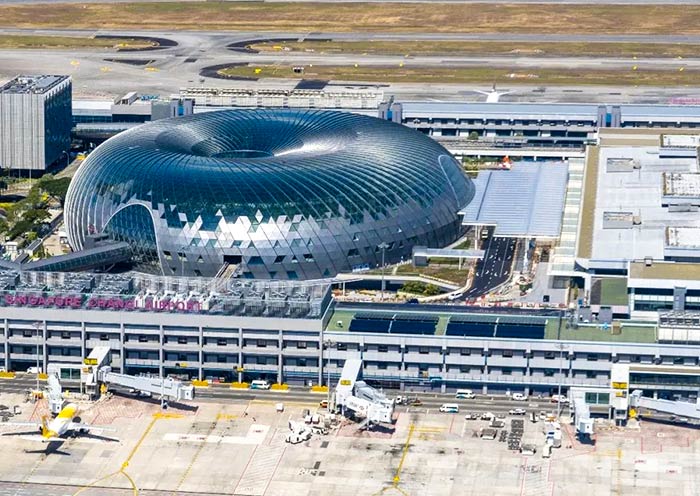
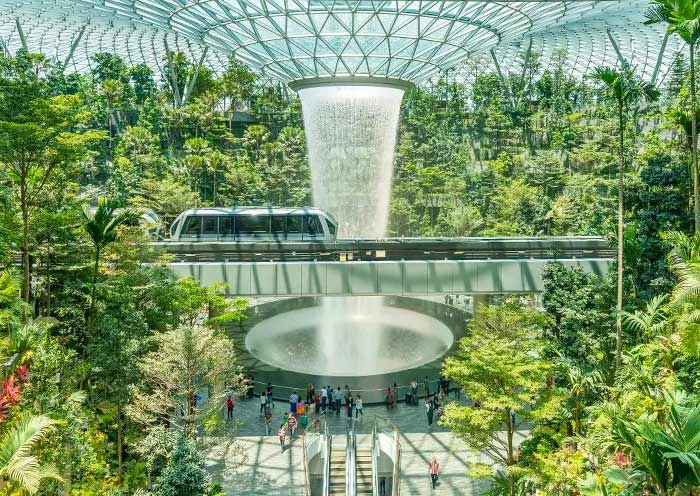
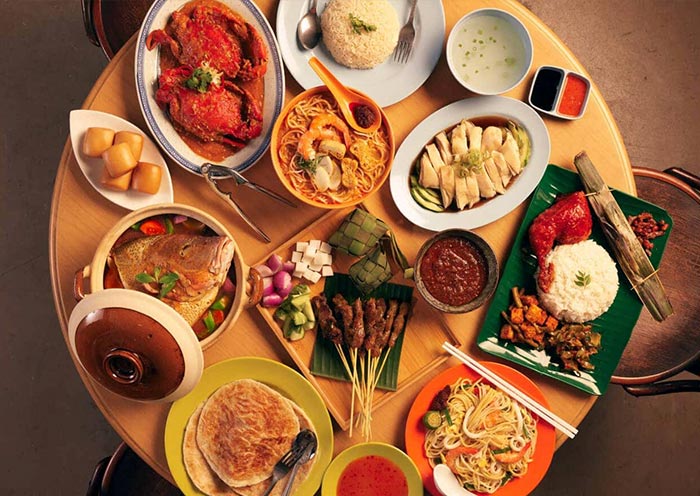
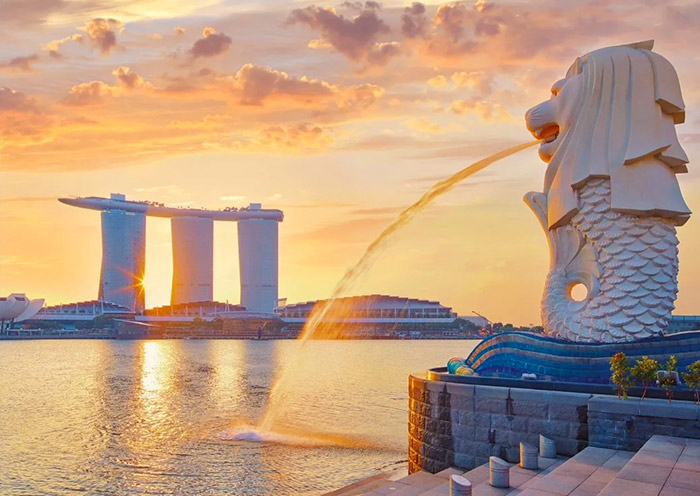
Discover Highlights of Singapore City. Wander through colorful Kampong Glam (Muslim Culture), rich in Malay & Arab heritage. At Merlion Park, capture iconic waterfront views of the Lion City. Admire the intricate architecture of Thian Hock Keng Temple (Taoist Culture), the place to worship Mazu, the Chinese sea goddess. Visiting Singapore Botanic Gardens, a green sanctuary/lung in the heart of Singapore’s urban landscape.
First, head to Kampong Glam, a good place to explore Muslim & Malay Culture. As one of the oldest street in Singapore, this area used to be the center of activities for the Malay Royal Family, and it retains many historical buildings and cultural attractions such as the Sultan Mosque, Arab Street and Haji Lane.
Kampong Glam was a seaside village 200 years ago. In Malay "Kampong" means 'village,' the village was named for the gelam trees that once grew there, used for shipbuilding and medicine. During Singapore's colonial era, Sir Stamford Raffles designated it for Malay, Arab, and Bugis communities in 1822. Today, its 19 th-century shophouses host textile shops and diverse restaurants.
The Sultan Mosque is the landmark of Kampong Glam due to its huge golden dome and towering minaret. Its architectural style is a fusion of Malay, Indian and Mughal styles, epitomizing Singapore's multiculturalism. Sultan Mosque was built in 1824 by Sultan Hussein Shah, the Sultan of Johor. In 1819, Sultan Hussein Shah's agreement with the British was a key event in the founding of modern Singapore. As part of the agreement, Sultan Hussein Shah was recognized as the First Sultan of Singapore, and the area of Kampong Glam was allocated to him and his followers. Now, the Sultan Mosque can accommodate up to 5,000 believers for worship at the same time. (Note: To enter the mosque, wear long pants and sleeves out of respect).
When visiting Kampong Glam you should not miss a visit to Haji Lane to check out the murals by local artists such as Yip Yew Chong (叶耀宗). Haji Lane is famous for its striking murals and graffiti, making it a photographer's paradise. It's packed with independent shops selling trendy fashion, vintage items, and quirky souvenirs. It's a hub for hip cafes and bars, perfect for relaxing and people-watching.
After that, you will pay a visit to Merlion Park by driving past Civic District, the historic heart of Singapore. You can view important landmarks (colonial era buildings) from your car such as the Padang, a historic field hosting national events, the elegant Singapore Cricket Club (Founded in 1852), the colonial-era Parliament House (Completed in 1827), and the stunning National Gallery Singapore.
You will have a quick stop at Merlion Park for the Merlion Statue. It is a National Symbol of Singapore that finished in 1972. The Merlion combines a lion's head and fish body, representing Singapore's 'Lion City' name and fishing village history. According to myth, a brave prince saw a lion on the island and named it Singapura, blending strength and maritime heritage. As the smallest park in Singapore, Merlion Park is the perfect spot for photoing the Merlion Statue (8.6 meter’s Height) at a close distance and viewing the Marina Bay Sands and CBD of Singapore from afar.
Then transfer to explore Thian Hock Keng, Singapore's oldest Hokkien temple and a symbol of local Taoist culture. Thian Hock Keng, built-in 1840 by early Hokkien immigrants, is dedicated to Mazu (妈祖), who protected early Chinese immigrants during their perilous sea journeys. Located in Chinatown, it is a masterpiece of traditional Southern Chinese Architecture. You can marvel at its intricate carvings, nail-less construction, colorful tile, ancestral worship traditions, and peaceful ambiance.
At Last, head to Singapore Botanic Gardens. Established in 1859, it has transformed from a British colonial-era tropical garden into a modern, world-class scientific institution focused on conservation and education. The gardens attract plant enthusiasts who come to explore tropical plants and orchids, birders hoping to spot species like the Oriental Pied Hornbill, Buffy Fish-Owl, and Stork-billed Kingfisher, as well as wildlife enthusiasts eager to encounter otters, monitor lizards, plantain squirrels, geckos... Locals frequent the gardens for jogging, picnicking, or attending concerts at its Symphony Lake.
Did you know that the Singapore Botanic Gardens played a pivotal role in the rubber industry, contributing to its recognition as the only World Heritage Site in Singapore? In 1877, the Gardens introduced the rubber tree to Singapore from Brazil via the Royal Botanic Gardens in the UK. This breakthrough led to the successful cultivation of rubber across Southeast Asia (Malaysia, Indonesia, Thailand), transforming the region into a global hub for rubber production. Its contributions to rubber cultivation, along with its rich tropical rainforest plant collection, stunning garden design, unique architecture, and cultural history, earned it UNESCO World Cultural Heritage status in 2015.
You won’t miss the crown jewel of the Singapore Botanic Gardens - the National Orchid Garden! Step into a world of color and beauty, home to over 1,000 orchid species and stunning hybrids. This is the ultimate spot to admire the Vanda Miss Joaquim (卓锦万代兰), the beloved National Flower of Singapore, and marvel at orchids named after global icons like Lee Kuan Yew (李光耀), Jackie Chan (成龙), Princess Diana, Michelle Obama, and Singapore’s very own songbird,Stefanie Sun (孙燕姿).
Travel Tips:
1.The iconic 150-year-old Tembusu tree, featured on Singapore's $5 note, is located within the Singapore Botanic Gardens. Specifically, it's found not far from the Tanglin Gate entrance.
2.The Singapore Botanic Gardens is a great spot to see Singapore's National Bird, the Crimson Sunbird. The small size and agility bird feeds on nectar and is often found among flowers in forested areas.
Free Time Ideas:
1.Take a ride on the Singapore Flyer (8:30 am to 10:30 pm; Self-pay) for panoramic city views in the night.
2.Explore Orchard Road, Singapore's famous shopping street.




After breakfast, it is time to end your 7 Days Thailand Singapore Tour. You will have some free time in Singapore to explore more on your own pace till your driver escorts you to the airport for your flight to next destination.
Free Time Ideas:
1.Visit the National Museum of Singapore (10:00 am to 19:00 pm; Self-pay) for a glimpse into the country's history. Closed on Mondays.
2.Fort Canning Park (near the National Museum of Singapore): It is a historic hill with ancient Malay roots, colonial forts, and WWII bunkers. Lush gardens, cultural events, and archaeological sites offer a blend of history and nature.
It is highly recommended that you arrive at Changi Airport early and take your time to explore the World's Best Airport. Do note that the Jewel Changi is located Outside the Airport Terminal, and offers unique experiences like shopping, dining, entertainment (Self-pay for Canopy Park & Mirror Maze), Rain Vortex waterfall, and stunning gardens.
Thank you for choosing Asia Odyssey Travel (AOT) for your Southeast Asia Tour, and we are always here working for you and hope to see you again for your next tour to Asia. Safe journey!
Extension Ideas:
1.Want to explore more of Asia? We can help you arrange trips to Singapore, Thailand, Laos, Vietnam, Cambodia, Philippines, Maldives, Sri Lanka, India, Nepal, Bhutan, China, Hong Kong, Taiwan, Japan, South Korea, and more.
2.Planning to visit Malaysia or Indonesia, the neighboring countries of Singapore? Let us know, and we'll customize your itinerary and help with travel arrangements.




Price: What’s Included & What’s Excluded
What's Included:
What's Excluded:
Important Travel Tips for Visiting Southeast Asia
Visa requirements vary depending on your nationality and the length of your stay. It's important to check the specific requirements for each country you plan to visit well in advance of your trip. You can usually find this information on the embassy or consulate website of the country you're visiting.
Dry season (November to April): This is the peak tourist season for Southeast Asia as a whole, with the most consistent sunshine and comfortable temperatures. Ideal for beach lovers and those who want to avoid the rain. This is also a great time for trekking and other outdoor activities.
Average temperatures during Dry Season in Southeast Asia:
- Vietnam: 77°F - 86°F (25°C - 30°C): It can be slightly cooler in the northern mountains during December and January.
- Thailand: 82°F - 90°F (28°C - 32°C): Eastern and southern Thailand, including popular beach destinations, tend to be a few degrees warmer than the north.
- Laos: 75°F - 88°F (24°C - 31°C): Keep in mind that the mountainous areas of Laos can get chilly at night, especially in December and January.
- Cambodia: 84°F - 93°F (29°C - 34°C): Temperatures can get quite hot, especially from March to May, in Siem Reap (Angkor Wat).
The currency varies from country to country. In Vietnam, the currency is the Vietnamese đồng (VND). In Thailand, it's the Thai baht (THB). In Laos, it's the Lao kip (LAK). And in Cambodia, it's the Cambodian riel (KHR). However, US dollars are widely accepted in most tourist areas.
- Dress modestly: When visiting temples, pagodas, or other religious sites, it's important to dress modestly and respectfully. This means covering your shoulders and knees.
- Removing shoes: In many temples, it is customary to remove your shoes before entering. Look for a pile of shoes at the entrance as a cue to do the same.
- Bargaining: Bargaining is a common practice in Southeast Asia countries’ markets and street stalls. However, it's important to do so respectfully and with a friendly attitude. Remember that the aim is to reach a mutually agreed-upon price, not to aggressively drive the price down.
Looking for more travel guides about Southeast Asia countries? Want to gather additional information to plan your trip? Our team of professional travel experts has written over 100 articles about Vietnam Thailand Cambodia Laos. Please check out our Southeast Asia Travel Guide for inspiration and detailed insights.
Hotel Conditions for Your Southeast Asia Tour
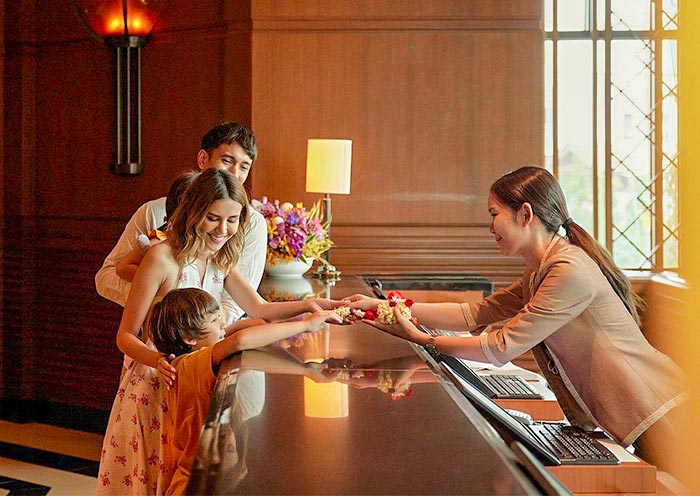

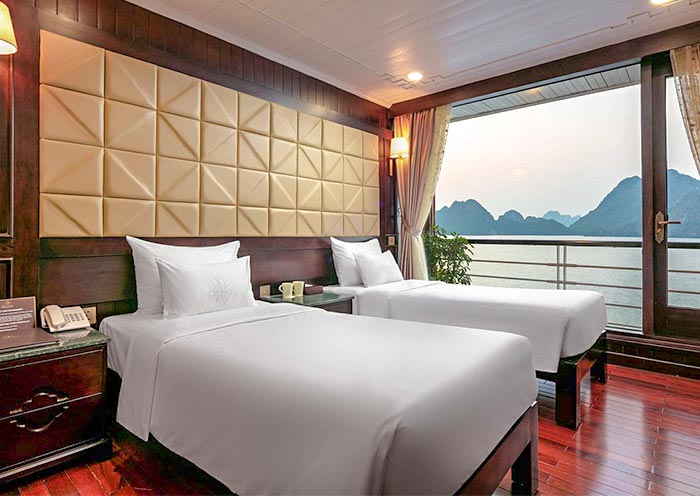
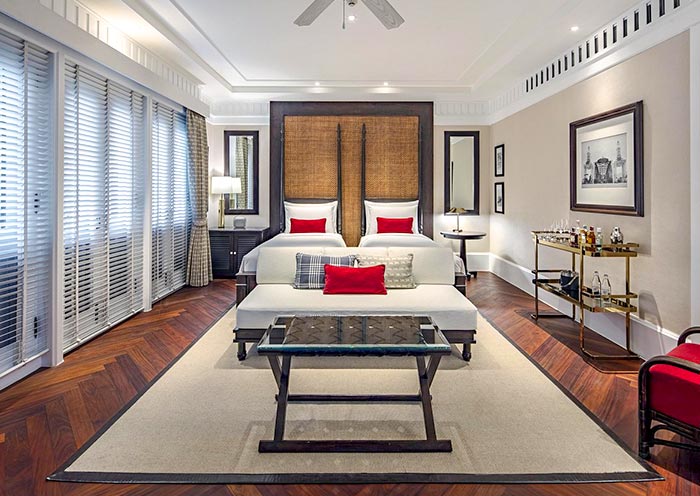
No matter whether you combine 2 or 3 countries, or visit all 4 countries in Southeast Asia, there are many different hotel styles and types to choose from. Travelers typically spend 7-9 nights in Vietnam, 6-9 nights in Thailand, and 2-3 nights each in Cambodia and Laos.
To cater to diverse traveler preferences and budgets, we offer a curated selection of accommodations. Our options include luxurious 5-star hotels, comfortable 4-star options, and economical 3-star establishments. All our selected hotels are conveniently located near city centers or popular tourist spots.
Find your perfect hotel for a great Southeast Asian experience! Our knowledgeable travel experts can provide you with various pricing options based on different hotels. Whether you seek a luxurious stay or have specific preferences, our experts will assist you in choosing the best option that suits your needs.
Photo Gallery for This Itinerary
Latest Southeast Asia Tours Reviews from Our Customers

Jan Woolley
USA
Date of Experience: Apr 26, 2024
Tour Customized by: Tony
You May be Interested in This Tour: Customized Tour

Emma
Singapore
Destination(s): Other
Date of Experience: Sep 14, 2023
Tour Customized by: Owen
You May be Interested in This Tour: Customized Tour

Arizona
Australia
Destination(s): Other
Date of Experience: Sep 04, 2023
Tour Customized by: Teresa
You May be Interested in This Tour: Customized Tour
Price: Request
(Based on a private tour for two people. Price varies depending on program, travel date, number of people.)
Free Enquiry! You don’t need to pay for the reservation.
- United States (+1)
- Australia (+61)
- Singapore (+65)
- Malaysia (+60)
- Philippines (+63)
- Canada (+1)
- Italy (+39)
- Indonesia (+62)
- United Kingdom (+44)
- Spain (+34)
- Mexico (+52)
- Hong Kong (+852)
- Thailand (+66)
- United Arab Emirates (+971)
- New Zealand (+64)
- South Africa (+27)
- Germany (+49)
- Brazil (+55)
- India (+91)
- France (+33)
- Vietnam (+84)
- The Netherlands (+31)
- Saudi Arabia (+966)
- Ireland (+353)
- Argentina (+54)
- Switzerland (+41)
- Romania (+40)
- Pakistan (+92)
- Japan (+81)
- Portugal (+351)
- Bangladesh (+880)
- South Korea (+82)
- Puerto Rico (+1)
- Türkiye (+90)
- China (+86)
- Belgium (+32)
- Qatar (+974)
- Greece (+30)
- Taiwan (+886)
- Austria (+43)
- Poland (+48)
- Israel (+972)
- Chile (+56)
- Sri Lanka (+94)
- Nigeria (+234)
- Peru (+51)
- Colombia (+57)
- Hungary (+36)
- Nepal (+977)
- Denmark (+45)
- Bulgaria (+359)
- Norway (+47)
- Slovenia (+383)
- Sweden (+46)
- Kuwait (+965)
- Costa Rica (+506)
- Ecuador (+593)
- Venezuela (+58)
- Malta (+356)
- Croatia (+385)
- Tunisia (+216)
- Czechia (+420)
- Mongolia (+976)
- Bahrain (+973)
- Mauritius (+230)
- Papua New Guinea (+675)
- Cambodia (+855)
- Dominican Republic (+1)
- Luxembourg (+352)
- Finland (+358)
- Guatemala (+502)
- Myanmar (+95)
- Maldives (+960)
- Slovakia (+421)
- Laos (+856)
- Serbia (+381)
- Brunei (+673)
- Oman (+968)
- Macao (+853)
- Panama (+507)
- Morocco (+212)
- Jordan (+962)
- Georgia (+995)
- Fiji (+679)
- Bolivia (+591)
- Lithuania (+370)
- Bahamas (+1)
- Cyprus (+357)
- Latvia (+371)
- Bhutan (+975)
- Iraq (+964)
- Iran (+98)
- Kenya (+254)
- Jamaica (+1)
- Zimbabwe (+263)
- Azerbaijan (+994)
- Uruguay (+598)
- Estonia (+372)
- Andorra (+376)
- Cameroon (+237)
- Ghana (+233)
- Kazakhstan (+7)
- Nicaragua (+505)
- Egypt (+20)
- Russia (+7)
- Albania (+355)
- Réunion (+262)
- Montenegro (+382)
- Algeria (+213)
- Afghanistan (+93)
- Martinique (+596)
- Uganda (+256)
- Honduras (+504)
- North Macedonia (+389)
- Trinidad and Tobago (+1)
- Suriname (+597)
- Antigua and Barbuda (+1)
- Zambia (+260)
- Ukraine (+380)
- Armenia (+374)
- Barbados (+1)
- Belarus (+375)
- Palestine (+970)
- Lesotho (+266)
- Moldova (+373)
- Ethiopia (+251)
- French Polynesia (+689)
- Gambia (+220)
- Guam (+1)
- Gibraltar (+350)
- Isle of Man (+44)
- New Caledonia (+687)
- El Salvador (+503)
- Comoros (+269)
- Seychelles (+248)
- Chad (+235)
- Samoa (+685)
- Cook Islands (+682)
- Palau (+680)
- Paraguay (+595)
- DR Congo (+243)
- Solomon Islands (+677)
